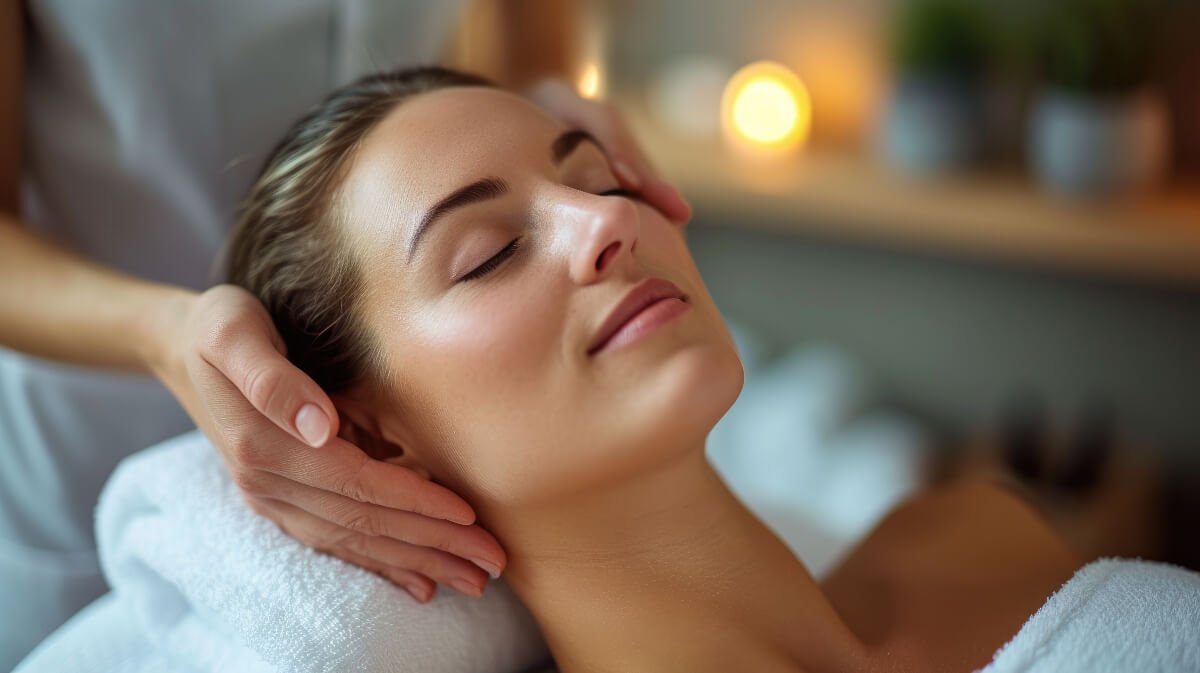CranioSacral Therapy, or CST, is a gentle-touch therapy that has gained attention for its ability to address a wide range of issues, from physical discomfort to emotional trauma. Despite recent surges in popularity, CST is not a new therapy—professionals have been studying the benefits of CST practices since the 70s!
Keep reading to find out if CranioSacral Therapy really works!

CST’s Rich Research History
John E. Upledger, a clinical researcher and professor at Michigan State University, discovered the amazing effects of CranioSacral Therapy in 1970 after studying the body’s connection to emotional and physical pain for eight years. CST focuses on the brain, spinal cord, and cerebrospinal fluid and shows that gentle manipulation of the cerebrospinal fluid can release tensions in the body and reset the central nervous system.
Dr. Upledger’s research found that the body can hold onto trauma for years. This has been studied and proven in various examinations since Dr. Upledger’s work began. CST aims to release these residual traumas. Dr. Upledger advocated for a holistic path to wellness that addresses physical and emotional health.
Dr. Upledger established the Upledger Institute in 1975 to continue his research. Today, with over 60 International affiliates, the Institute continues Dr. Upledger’s mission of discovering the evidence-based secrets of CST.
Is CranioSacral Therapy Evidence-Based?
CST involves applying no more than 5 grams of pressure, roughly equivalent to the weight of a nickel, at specific points on the body to release tension and promote relaxation. According to advocating experts, this technique encourages the body’s ability to heal itself by restoring the flow of cerebrospinal fluid and releasing what Dr. Upledger termed “energy cysts,” which are essentially the residual effects of past traumas.
The body’s ability to hold onto traumatic experiences is a complex phenomenon that has intrigued researchers for decades. Studies in the fields of psychology and neuroscience have shed light on how traumatic events can become deeply ingrained in the body, affecting everything from hormone levels to neural pathways. This process, often referred to as “body memory” or “somatic memory,” suggests that trauma is not solely stored in the memory but can also lead to physical ailments and health issues. Individuals who have experienced trauma may exhibit symptoms that can persist long after the initial event occurred.
Such symptoms include:
-
Chronic pain
-
Muscle Tension
-
Digestive Issues
-
And more
Researchers of CransioSacral Therapy argue that CST can help release stored emotional energy and promote a patient’s overall well-being by addressing physical manifestations of trauma. These manifestations include build-ups in the craniosacral system, which is part of the nervous system. CranioSacral Therapy, in conjunction with talk therapy, addresses these physical signs by targeting the areas where patients are able to release the build-up of cerebrospinal fluid that leads to their symptoms of pain, anxiety, nausea, etc. CST’s emphasis on gentle touch and relation techniques, the emotional exploration of how past experiences can linger with us, aligns with broader stress reduction principles and overall mind-body healing.
CranioSacral Therapy’s Proven Benefits & Results
Aside from trauma-related illnesses, CranioSacral Therapy has been proven to improve the lives of those suffering from a wide range of illnesses and discomforts. Younger demographics often experience a range of issues that can benefit from the gentle approach of CST, including breastfeeding difficulties, colic, sleep disturbances, developmental delays, and orthodontic pain. A study performed by Cramer, Dobos, and Haller found that infants, children, and adolescents treated with CranioSacral Therapy showed significant improvements in ailments like tinnitus and headaches.
By addressing tensions and restrictions in the nervous system early in life, patients can enjoy improved well-being from infancy into adulthood.
CST has been increasingly recognized as a valuable tool in partnership with traditional medical care, with trusted hospitals and healthcare facilities incorporating it into their patients’ treatment protocols. Patients seeking alternatives to conventional medical interventions for themselves or their children may turn to CST as a non-invasive option with fewer side effects.
CranioSacral Therapy, A Gentle Path to Healing
While CST has gained traction in many circles, skepticism remains extant among critics who argue that the underlying principles of CST may lack empirical support. These voices question the validity of claims regarding the manipulation of cerebrospinal fluid.
A widespread concern of CST is the potential risks associated with the practice when applied to vulnerable patients such as infants. Still, it is worth remembering that no more than five grams of pressure are used during CST sessions. Despite the remaining skepticism around CST, healthcare professionals continue to further the research with each patient whose life is improved by the more than 50-year-old practice.
Does CranioSacral Therapy Work? Discover the Benefits of CST For Yourself
The legitimacy of CranioSacral Therapy has been a subject of debate within medical and scientific communities for decades. Still, it is clear that CST is not a hoax but a science-based, gentle practice. With advocates praising its gentle and holistic approach, CST has demonstrated promising results in multiple applications. Research will continue with the help of The Upledger Institute, and clinical trials will continue to explore the therapy’s capabilities and limitations.
To explore holistic therapies further and experience the healing potential of CranioSacral Therapy, schedule a session today. Take the first step towards holistic wellness, and book your appointment now!
